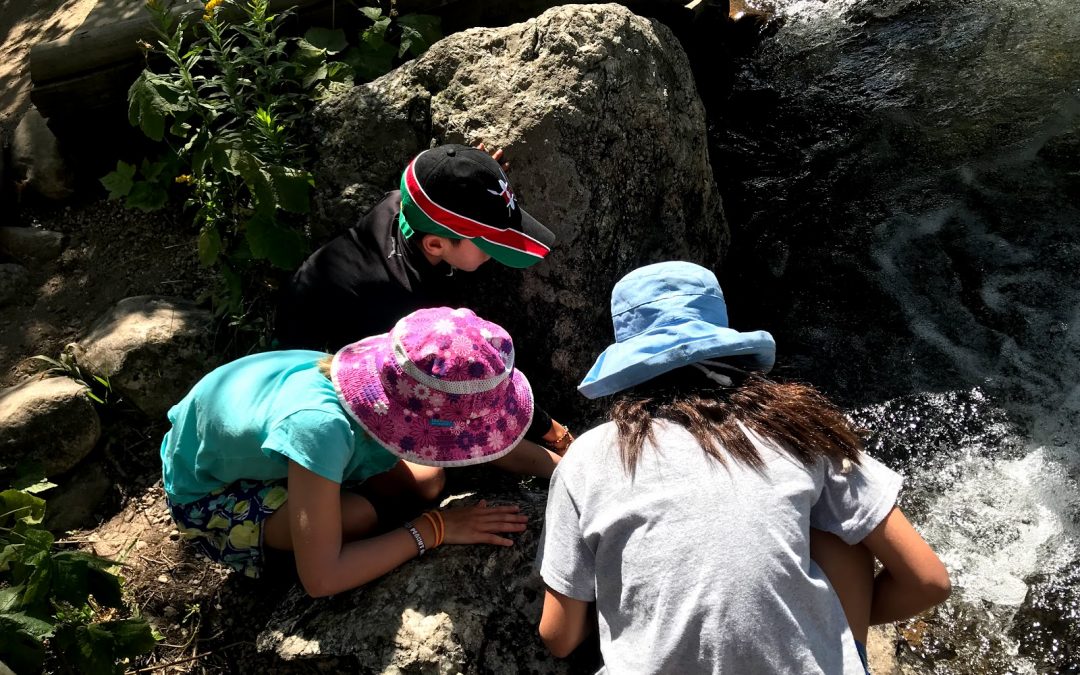By. Jonathan Cloughesy and Hunter Gehlbach
The 2018 winter that produced record discontent with “bomb cyclones” and recurring late season nor’easters from New England to Washington D.C. has turned into an inglorious summer with California, Colorado, and much of the west ablaze. Concurrently, the east has struggled to manage costly flooding from severe thunderstorms. The potent impact of the changing climate on our weather becomes clearer every day.
Meanwhile, as teachers prepare for the coming academic year, interest in changing school climate has burgeoned. As educators leave behind the testing focus of No Child Left Behind, schools are increasingly focusing on social-emotional learning programs and initiatives to ensure a healthy learning environment for all students.
The juxtaposition of these challenges poses an intriguing question: By focusing on the global environment, sustainability, climate change, and the related challenges that today’s students are inheriting from previous generations, can schools improve their own school climate? And potentially improve students’ well-being and learning as a result? As ostensibly disconnected as local school climates are to global climate change, we think that having students address the real-world issues they face with respect to global climate can be leveraged to improve their own school climate.
To make this argument, we first need to articulate what we mean by school climate. The movement to improve the non-academic aspects of students’ schooling experiences goes by many names and has catalyzed scores of initiatives: social-emotional learning, 21st century skills, character traits, non-cognitive abilities, and school culture are just a few. However, at the core of the vast majority of these efforts lies a focus on students’ fundamental needs: social connectedness, motivation, and self-regulation.
Students’ need for social connectedness encompasses both a sense of belonging with their peers and strong relationships with their teachers. Lacking a bond with those who they are learning with and from, students will not feel secure enough to learn. Motivation represents a second pivotal ingredient. Students must set goals, muster sufficient energy to pursue them, believe that they can accomplish them, and do so in a supportive environment. Students’ capacity to self-regulate their thoughts, emotions, attention, and behavior provides the third pillar. This capacity affects how well students can develop and maintain social relationships as well as how well they can adhere to their goals.
With this conceptualization of social-emotional learning in mind, how can embedding a focus on global climate issues into a school’s design potential improve the local school climate?
First, schools with a focus on environmental challenges offer a unique sense of purpose that can unite the social connectedness between adults and students through a central mission. When individuals coalesce around a common goal, a social trust develops that breaks down traditional barriers such as stereotypes and prejudices—replacing these norms with a co-operative ethos (Butler & Kedar, 1990). Moreover, green schools engage their community members in authentic, real-world problem-solving. For example, students and teachers might combat the problem of food waste by collectively building and maintaining a compost system. To be sure, many schools may successfully engage their students in problem-solving activities. However, working on authentic problem-solving activities with major consequences will likely result in deeper, more authentic relationships for teachers and students. Teachers become partners in the quest to mitigate the effects of climate change on students’ futures; classmates become invaluable resources for improving ideas.
Second, environmentally focused schools can shift away from the stick and carrot approaches that pervade many schools. Green schools center their students’ education around concrete and relevant topics rather than abstract or theoretical problems. When students focus their efforts toward content that they deem important, relevant to their own lives, and useful in the real-world, their interest in the subject matter and their performance surge (Hulleman & Harackiewicz, 2009). Returning to the food waste example, imagine a class of students who take the initiative to start a compost program. These students could estimate daily food waste, devise strategies to get peers to reduce their food waste, and compute the benefits of keeping waste out of landfills and returning it to a garden. In addition to the social benefits of these types of goals, because such projects are important, personally relevant, and useful for the school, they will (on average) be substantially motivating for students. It is also worth noting that this sort of project can inspire a sense of hope in students (Kerret, Orkibi, & Ronen, 2014)—a key element of motivation in a domain that many individuals find themselves paralyzed with despair.
Finally, green schools can facilitate students’ self-regulation. With healthier learning environments, students’ capacities for self-regulation typically soar. Specific building design attributes, such as indoor air quality, high performance lighting, adequate air flow, humidity reduction, and temperature control are associated with improved scores on standardized testing, reductions in student and teacher absenteeism, and improvements in a wide range of physical health indicators, including reductions in asthma, allergies, flu, cold, and headaches (Kats, 2006; Mendell & Heath, n.d.; Schneider, 2002). Students benefit even more from playing outside in natural environments, which studies show as having direct, positive impacts on well-being (Bowler, Buyung-Ali, Knight, & Pullin, 2010). On the other hand, poor indoor environmental quality has been associated with reductions in productivity, learning, and test scores (Kats, 2006). Further, students at green schools build their capacity to self-regulate by engaging in activities that they are invested in which encourages them to persist and persevere even in the face of substantial set-backs.
As the world turns more attention to global climate issues and schools increase their focus on the social-emotional climate within their buildings, unique opportunities arise to use environmental challenges to improve students’ social connectedness, motivation, and self-regulation capacities. If social-emotional learning is a prerequisite to success in school and life, then schools that promote these qualities will see their students go on to lead happy and productive lives, have skills and dispositions to engender success, and serve as leaders in an increasingly climate-conscious world. Through fostering social connections, motivation, and self-regulation, green schools give students the most important gift of all: the power to make a difference for themselves, and for the world.
References
Bowler, D. E., Buyung-Ali, L. M., Knight, T. M., & Pullin, A. S. (2010). A systematic review of evidence for the added benefits to health of exposure to natural environments. BMC Public Health, 10(1), 456. https://doi.org/10.1186/1471-2458-10-456
Butler, R., & Kedar, A. (1990). Effects of intergroup competition and school philosophy on student perceptions, group processes, and performance. Contemporary Educational Psychology, 15(4), 301–318. https://doi.org/10.1016/0361-476X(90)90027-X
Hulleman, C. S., & Harackiewicz, J. M. (2009). Promoting interest and performance in high school science classes. Science, 326(5958), 1410–1412.
Kats, G. (2006). Greening America’s Schools. American Federation of Teachers, et Al. Capital E.
Kerret, D., Orkibi, H., & Ronen, T. (2014). Green perspective for a hopeful future: Explaining green schools’ contribution to environmental subjective well-being. Review of General Psychology, 18(2), 82.
Kerret, D., Orkibi, H., & Ronen, T. (2016). Testing a model linking environmental hope and self-control with students’ positive emotions and environmental behavior. The Journal of Environmental Education, 47(4), 307–317.
Mendell, M. J., & Heath, G. A. (n.d.). Do indoor pollutants and thermal conditions in schools influence student performance? A critical review of the literature. Indoor Air, 27–52.
Schneider, M. (2002). Do School Facilities Affect Academic Outcomes? Retrieved from https://eric.ed.gov/?id=ED470979
Snyder, C. R., Shorey, H. S., Cheavens, J., Pulvers, K. M., Adams III, V. H., & Wiklund, C. (2002). Hope and academic success in college. Journal of Educational Psychology, 94(4), 820.
Author Bios
Jonathan Cloughesy graduated from the University of California – Santa Barbara (UCSB) with a B.S. in Biopsychology and a minor in Applied Psychology. Jonathan’s interests revolve around the intersection between school climate and well-being, as well as the adoption of environmentally-friendly attitudes and behaviors. He currently leads efforts in UCSB’s Social Psychology in Education and the Environment (SPiEE) lab to design and test a similarity intervention on productive engagement in conversations regarding environmental issues and education.
Hunter Gehlbach is an Associate Professor and Associate Dean at the University of California – Santa Barbara’s (UCSB) Gevirtz Graduate School of Education as well as the Director of Research at Panorama Education. An educational psychologist by training and a social psychologist at heart, his interests lie in improving the social side of schools. Recently, much of his focus has shifted toward investigating how social psychological approaches might improve environmental education. A former high school teacher, Gehlbach taught at Harvard’s Graduate School of Education from 2006 – 2015 before fleeing the snow for UCSB.


